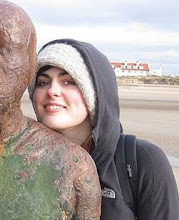In January, Jane and I started work on transforming Unit 31 at Wellington House into a productive and comfortable studio space. There's still plenty we would like to do, but here is a peek at where we are now, 6 months down the line.
How the studio looked the first day we saw it...space to play with and lots to do!
This is my work desk. I got busy with the jig-saw to create a swanky curve in the mdf, and can rotate my canvas as I work on a swivel platform, which was no longer needed by my neighbour Dave Goodwin at Manchester Craft and Design Centre. When I salvaged it from Dave I had no idea what I wanted to rotate - turns out it's incredibly useful - thanks Dave!
This is our little living room space, thank you very much Mike Doward for donating the futon, it gets plenty of use! As does the sofa which was kindly donated by one of Jane's friends, (sorry I'm not sure who - thank you whoever you are, it is very comfortable!).
The kitchen has just come together after recently getting our sink plumbed in. Thank you very much to our neighbour John Brewer at the mill, who is swapping handy man expertise for one of my paintings. Just out of shot I have a little hob for making soft boiled eggs - priorities! Big thank you to Rachel Saunders (the Magpie's Daughter) for our kitchen table!
We have used some salvaged pallets to create a platform to work on by the windows. When we manage to get some more pallets we intend to extend it and fill in the middle, and also raise it by another layer. It gives us great natural working light, and an elevated view to the east, across Manchester to the hills of the Peak District.
This is Jane's packing area (fingers crossed she doesn't mind me showing you...)
Jane has made herself a mahoosive table to work on - a crafter's dream!
Thanks again to Mike Doward who donated a shelving unit he no longer required. It has been upcycled into a canvas storage system, with the help of lots of dowel.
Photography corner...I love that I can leave this all set up and ready to go.
Not much to show you here, but for a sense of completion...we also have two little rooms. This one has an odd window through from the main space. It's currently my varnishing room. Thank you Lucy Lloyd-Roach who donated the chair, and Bryony Anderson for some very useful shelves currently in there.
This room is on the other side, and will probably be a woodworking space when finished.
Also thanks to Nick Leyland (of Redstart Film) for help with seemingly never-ending painting of walls, and other assistance generally consisting of lugging heavy things around. One more picture for good luck...















